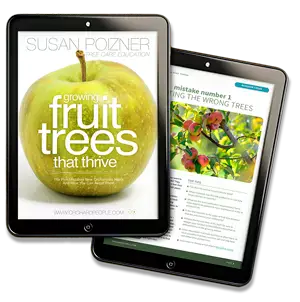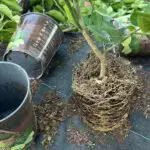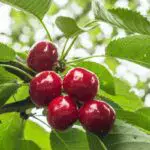How do you choose fruit trees that will work for your landscape? This article and video show you the tips Read more
How to Make Hard Cider in Three Easy Steps

Autumn is the perfect time to enjoy the apple harvest. Maybe you grow your own apple trees. Or maybe you want to pick up a bushel or two at a farmers market. Either way, a fantastic way to enjoy the harvest is to make hard apple cider. In this article we will teach you a hard cider recipe that allows you to make hard cider in three easy steps.
You need a little basic equipment, a little knowhow and a little patience, according to Ben Watson, author of Cider Hard and Sweet: History, Traditions, and Making Your Own. In Episode 13 of the Urban Forestry Radio Show, we sat down with Ben Watson, to get some tips on making hard cider.

hard cider has become more popular with the growth of micro breweries
Not long ago, most of North America’s hard cider was made on an industrial scale. However, North America has increasingly seen artisan ciders produced in local micro- and home breweries. Watson knows a number of individuals who have built a second career developing their own hard cider recipe and producing hard cider in their own micro-breweries.
Watson became interested in how to make hard cider in the 1980s, when he met some cider-makers in New England. He was fascinated with how easy it is to brew quality beverages. From there, his interest expanded through his own adventures in fermenting. In Episode 13, he shared some of his wisdom, and what he keeps in mind when preparing a brew. Below, I outline his hard cider recipe for success in a few simple steps.

a hard cider recipe in three easy steps
Step One
You can buy or grow apples and press them yourself. Or you can buy a sweet, non-alcoholic, unpasteurized cider to use as a base. This “sweet” cider is essentially juice, which is perfectly fine for a beginner (or even an experienced brewer!) to use. While Watson does go into a bit of detail about choosing cider apples to use in your hard cider recipe in Episode 13 of the Radio Show, he goes into much more detail in his book.
Step Two
Take a large bottle or jug that can be sanitized and sealed. Pour the juice into this container, and leave it uncovered in a cool dark place until it gets frothy. The frothiness is the result of yeast in sugars beginning their work. After this initial burst of activity - the yeast feeding on the sugars - clean off the container’s outside and seal the air out with a cork or cap. After the frothiness ends, seal the container. This lets the yeast’s anaerobic ("oxygen-free") processes take place.
Step Three
The third step in making hard cider is the simplest. Just be patient! You don’t want to rush fermentation. It can take months for fermentation to reach a good point, and it’s not possible to speed it up. There is a point where your cider stops ‘improving,’ but a hard cider can be left alone to take care of itself and keep for several months to a few years before going ‘bad.' So while you cannot rush fermentation, you also have a forgiving window of time to clarify and bottle the drink. To learn about the science of fermentation, read the side note below.
Side Note: What is Yeast?
Yeasts are microorganisms in the fungus family. Some species occur naturally in apples, and are harmless and undetectable when the fruit is fresh. When the juice is left in an appropriate environment – somewhere cool and dark is most effective, that won't be disturbed by people bumping into the containers – the yeasts may begin to propagate, feeding on sugars in the juice and producing alcohol as a byproduct. This process is more or less the same for all alcohols, and different bases – apples, grapes, potatoes, or whatever – become different kinds of drinks.
As the yeast feasts, it reproduces, consuming more sugar and producing more alcohol and carbon dioxide, which create the drink’s fizziness. Oxygen stops the fermentation process: this is why we seal the container, to prevent fresh air from getting inside. If this seal is broken too early in the fermentation process, oxygen will get in, the yeast will stop its activity, and the batch will be ruined. However, after alcohol reaches a certain percentage of the drink’s volume, the process will naturally slow, and from there the hard cider will be ready for clarifying and bottling.

selecting special apple blends for a hard cider recipe that suits your taste
As you can see, once you learn the basic hard cider recipe, it is really quite easy. But you can also make things more complicated, and interesting, if you explore specific apple varieties to press yourself instead of using ready-made juice.
Different varieties of apples produce different flavours, and in turn, different kinds of ciders. In his book, Watson lists over seventy varieties – a blend may be as complicated or as simple as you want it to be.
Over time, you will start to see how creating and brewing your own hard ciders can be an art and you will develop hard cider recipes that suit your taste.

want to develop your own hard cider recipe? learn more here...
If you’d like to hear from Ben Watson on how to make hard cider, and how to develop your own unique hard cider recipe click here to tune into Episode 13 of the Urban Forestry Radio Show on OrchardPeople.com. And be sure to subscribe to the podcast so you don't miss other episodes.
Fruit Trees
That Thrive


Kameron Chausse
Intern at OrchardPeople.com.
Kameron Chausse is a Windsor, Ontario based writer and student at St Clair College. He is currently an intern for the fruit tree care education website www.orchardpeople.com.


